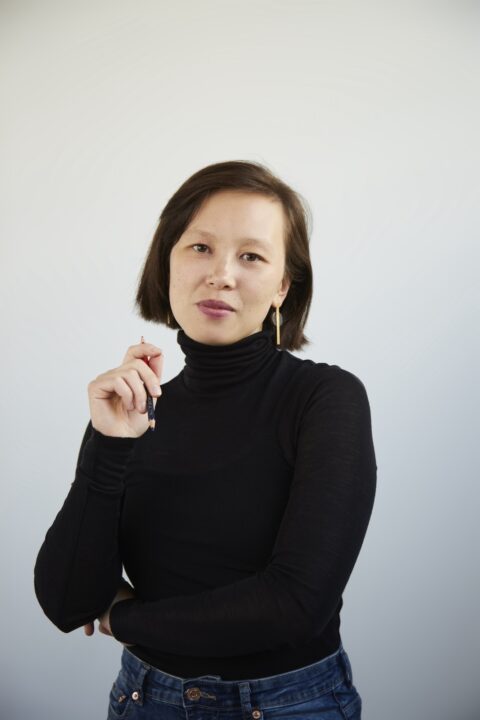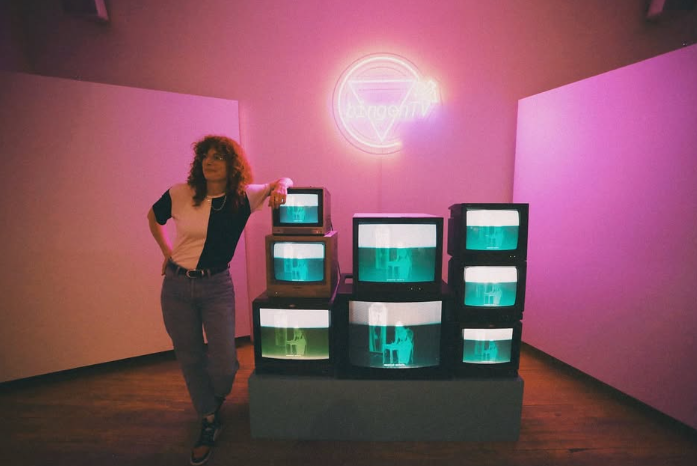If you wander into the Video Pool Media Arts Centre these days, you’ll dive into the past with a talk show about gardening, supposedly from the 1980’s. The show, decidedly queer in nature, is called bingenTV, and it channels the works of the 12th century musician, scientist, nun and polymath Hildegard von Bingen, with reimainged music by Winnipeg composer Ashley Au.
Bingen’s body of work is so vast in its scope that Naomi Woo and Sophie Seita, the creators of bingenTV, came to know her very differently. “My very first interactions with Hildegard of Bingen, like many musicians, were in music history class, where I was told that she was the first-ever woman composer,” says Woo, the former RBC Assistant Conductor of the Winnipeg Symphony Orchestra. “But when I got to know more, I was fascinated by so many aspects of her life and person and career beyond just her musical composition.”
Listen to Naomi Woo and Sophie Seita's full conversation with Nolan Kehler here.
The world beyond Bingen’s music was how Seita first interacted with her. “I encountered her through her writing on the medicinal qualities of plants,” she recalls, “and I asked my stepdad when I was a teenager to make me an herb-spiral inspired by Hildegard’s teachings.”
Fast forward to the beginning of the public health lockdowns, and Woo and Seita found themselves drawn to Bingen again as they searched for a figure to represent in their shared art. :We had been working on a series of performances that responded to forgotten female or queer artists, writers or musicians,” explains Seita. “We landed on Hildegard von Bingen because of this shared interest in her multidisciplinary practice and felt that there was a connection that we could draw between Hildegard von Bingen and these other feminist and queer voices that we had been researching.”

The multidisciplinary nature of Bingen’s life comes shining through in bingenTV, where video collides with storytelling and textiles. Another blend that occurs is between what is known and what is imagined when it comes to Bingen’s life and works. With little surviving source material of Bingen’s work, artists and creatives have to fill in the gaps with their own responses across the centuries.
“Sophie and I are definitely always interested in blurring lines between fact and fiction and finding truth not just in the established and recognized academic sources, but also finding truth in reading between the lines,” says Woo. “So, we felt like a talk show was a great way to provide a sense of truthiness while also being really playful with what the genre of a talk show could be.”

Alongside its playful nature, the piece also carries a serious undertone with it. Set in the 1980’s, bingenTV is also a response to the “Don’t Say Gay” legislation that instituted by the British government under Margaret Thatcher. Seita, who is based in London, and Woo, who has deep ties to that city, used bingenTV as a chance to highlight the stories of those who would not have been under these policies.
“In the talk show, we share a lot of our research into these figures,” says Seita, “so we hope that by maybe uncovering some of these hidden or forgotten stories, people might want to continue writing these stories themselves or make new connections. It’s really an invitation for people to contribute to our speculative archive.”
“I don’t think authenticity is a quality that we are especially interested in,” adds Woo. “We cite in some of our work people like Jose Esteban Munoz who says queerness has not been about evidence for obvious reasons. At times when people couldn’t express their queerness outwardly, the explicit evidence of the kind that we’re used to – explicit, historical, scientifically verifiable evidence – is not there. And instead, we need to find queerness in other ways... we find it between the lines.”

bingenTV runs at Video Pool in the Exchange District until August 1. The exhibit is open from 1 p.m. to 5 p.m. Wednesdays through Fridays in Video Pool’s Poolside Gallery. More information can be found at Video Pool’s website.
